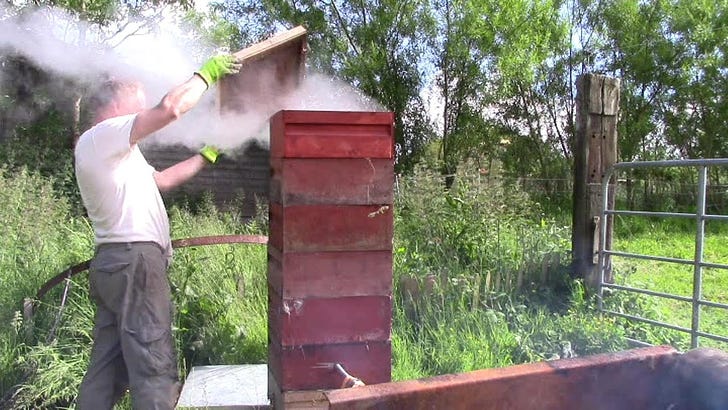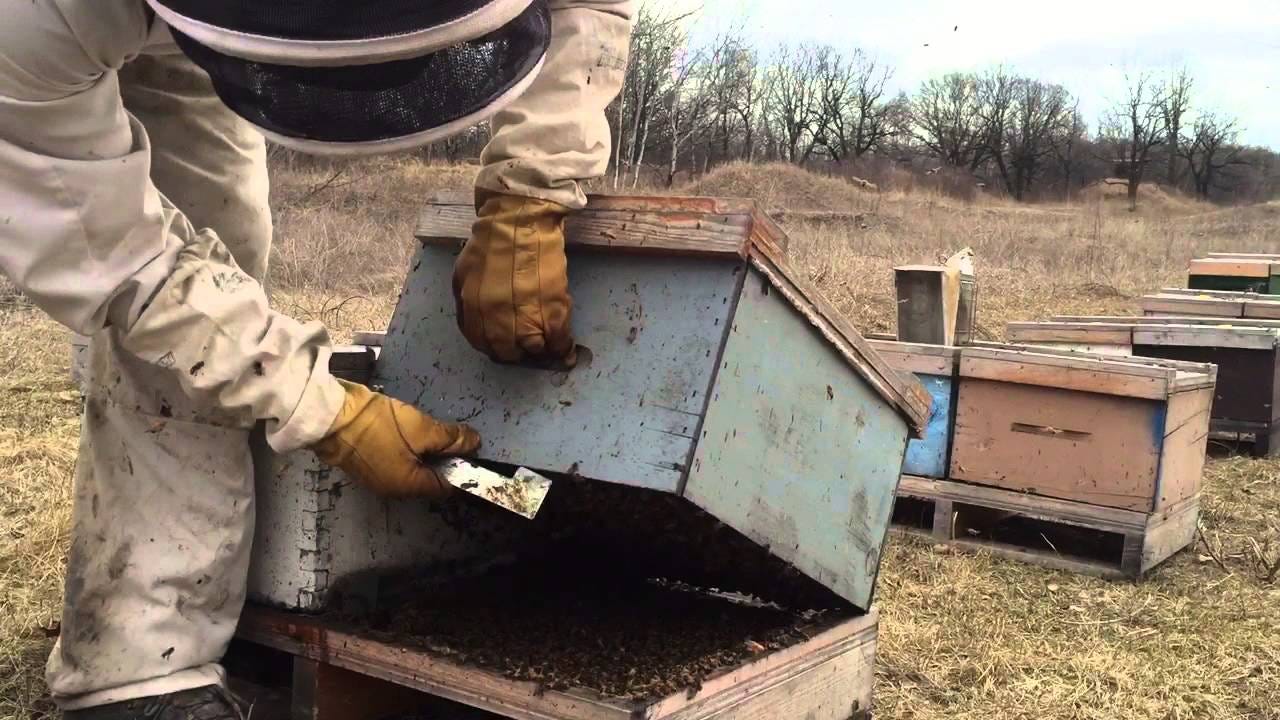The time is fast approaching for my favourite task of the beekeeping year – extracting wax and making furniture polish. I recognise, however, that this enthusiasm may not be universally shared. “It’s such a pleasure to have the house turned into a craft workshop,” as my wife observed with questionable sincerity.
Before that joyous moment arrives, however, more mundane seasonal chores need to be addressed.
The end of the year arrives early for beekeepers. Come October, we will be thinking of bedding our bees down for the winter. Our tasks then include weighting down the roofs of the hives and securing them with ratchet straps to make sure that autumn gales won’t blow them over. Also, as soon as I hear rodents scratching around our house in the dark and trying to find a way in, I know that the time has come to pin mouseguards over the entrances to my hives to prevent those little blighters from forcing their way into the bees’ houses.
In my years keeping bees I have developed my own routines and methods for trying to help my colonies survive through the winter. Other beekeepers will wait until the winter solstice to give the bees a Christmas treat by placing a packet of fondant on top of the holes in the crown board. I do that in October, after I have finished feeding them through September with a syrup that is composed of two parts water to one of sugar. The bees need to build up about 30kg of stores in the hive, including their own honey reserves. You judge how it’s going by hefting the hive – lifting a corner and sensing its weight in your hand.
(hefting a hive)
Similarly, this will be the time that I “nadir” my hives, which means separating and reversing the order of the boxes that make up the hive as a whole. In this process, the honey super box that is usually on top of the hive goes on the bottom of the pile so that the brood boxes are above. Many beekeepers don’t believe in nadiring their hives at all but I have found that my colonies seem to emerge stronger in spring if their stores of honey have been below the cluster they form in the brood boxes. There’s no established science to support these practices. They amount to little more than my own superstitions.
The wax extraction is on a different plane. Some might find this exercise to be something like going back to the chemistry lab at school.
For me, however, the wax extractor I borrow from my local club and the steamer that goes with it are most like the copper boiler in which my mother used to wash the family’s weekly laundry every Monday morning in the 1950s. When I am operating this contraption, I can almost smell the soapy steam, blending with the smoke from the fire beneath, that filled the garden outhouse when she stirred the contents of that boiler with a pair of long-handled wooden tongs that were bleached white from use.
As a matter of fact, that outhouse might have been the perfect place for extracting the wax from a bunch of musty old frames. Lacking that facility, I always set up the apparatus on the kitchen table with a bucket on a kitchen chair below the spout of the boiler. This is the intrusion that my wife does not wholeheartedly welcome.
(Something like this)
It always seems like an improbable miracle that any that anything positive will result from this primitive set-up but, after about 20 minutes of steaming, a thin stream of pale yellow fluid starts to dribble from the spout of the wax extractor, forming a little puddle in the bottom of the bucket.
The stream then picks up pace with the puddle deepening, spreading and darkening. Soon it covers the whole bottom of the container to the depth of about a fingernail looking like brown vinegar surmounted with yellow scum. Eventually, by the time the stream peters out, the total weight of the contents of the container will be several kilos. It then just needs to be allowed to set, rinsed off and dried in the sun to be useful pure wax.
This business always makes me think of Harold Wilson’s dictum that the most useful aid for a writer is a pound of beeswax to keep him stuck to his seat at his desk. That motto came most vividly to mind when my wife got home from work after the first time I extracted wax. She complained about the state of the kitchen floor, which – I was informed - she had washed only yesterday, then sat down at the kitchen table to have a cup of tea and found her skirt stuck to the chair. I wondered at that moment whether to outline the case for an outhouse but decided it would probably be better to wait for another day.
The wax has many uses. One is to make lovely candles. They burn steadily and slowly without smoking, as they did over many centuries when they illuminated cathedrals and monasteries where the monks kept bees.
I have also made imitation fruit which annoys anybody who is pleased to think they have picked up the last banana in the fruit bowl only to find it a little light in substance.
My wax is also in demand among my friends. One is a painter who uses wax in his pictures. Another is a furniture restorer who uses it in his stains and polishes.
You can even, I gather, turn it into something called Bahookie Lotion (Bahookie Lotion (50g) (beeswaxscotland.com) Perhaps I’ll give little tins of that to specially favoured friends for Christmas.
The best thing, however, is the furniture polish.
My recipe calls for soap flakes and turpentine – the purest you can find. I buy it online. It is 100% pure, comes from Portugal and smells ravishingly of pine. To hell with the cost, you need to tell yourself.
You dissolve the soap flakes in a bowl of hot water, then stir the wax into the turps in a bain marie over a medium heat on the hob. Mix it all together when dissolved.
Having cooled, the mixture becomes as liquid as curdled milk. A night in the fridge solidifies it to the consistency of cottage cheese. There’s always enough to fill several large tins.
It’s so fab to smear this stuff on surfaces around the house with kitchen roll and then polish it off with clean J-cloths. I apply it to the cherrywood side-tables I brought back from Beijing in 1985 while China was still a Third World country; the walnut case of the grandfather clock which was first owned in the nineteenth century by my wife’s grandfather; the hard surfaces of the car’s interior; even an old leather wallet which had lain in the back of a drawer for more than a decade because it looked as if someone had been using one of its surfaces to cultivate fungus.
They all come up with a deep, lustrous shine. Soon the house will be thrumming with an entrancing aroma. It isn’t, however, entirely to everybody’s taste. “Pooh, what’s that pong?” asked one of my daughters the first time I concocted the mix.
Also, probably best not to go online and look for a tin of beeswax polish to buy. You will find the price, including delivery, to be less than the cost alone of the turpentine you bought for your own craftings.
But then, we have to remind ourselves that we’re not in this merely for the pursuit and indulgence of material interests, are we? Can the spirit of divinity not be found in the creation of a tin of furniture polish – or is that pushing it?
See George Herbert: The Elixir





Sorry to lower the tone but do you sell that beeswax polish?
I have a poor memory but I looked it up. I'm guessing you mean Prayer (1). I wrote a dissertation in my last few months at school on Herbert and Hopkins because I saw something similar in the directness of their dialogues with God. I was more or less an atheist but I responded to this process which The Prayer kind of sums up.